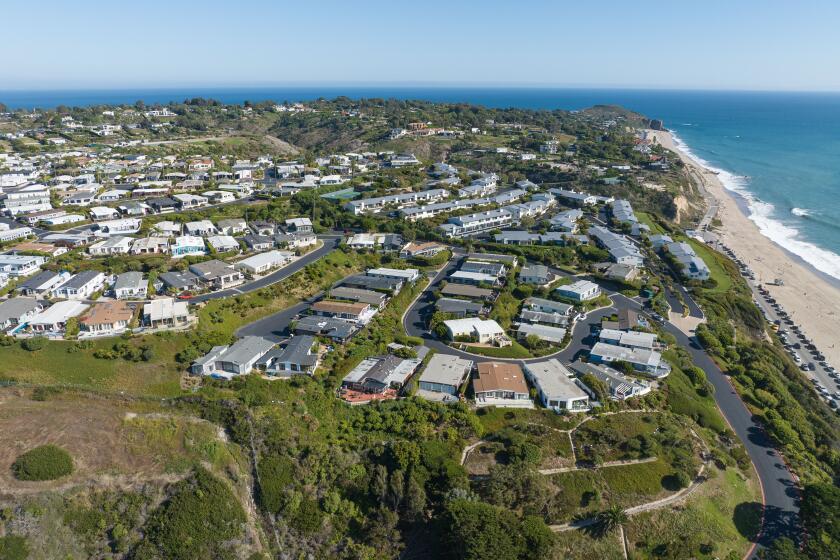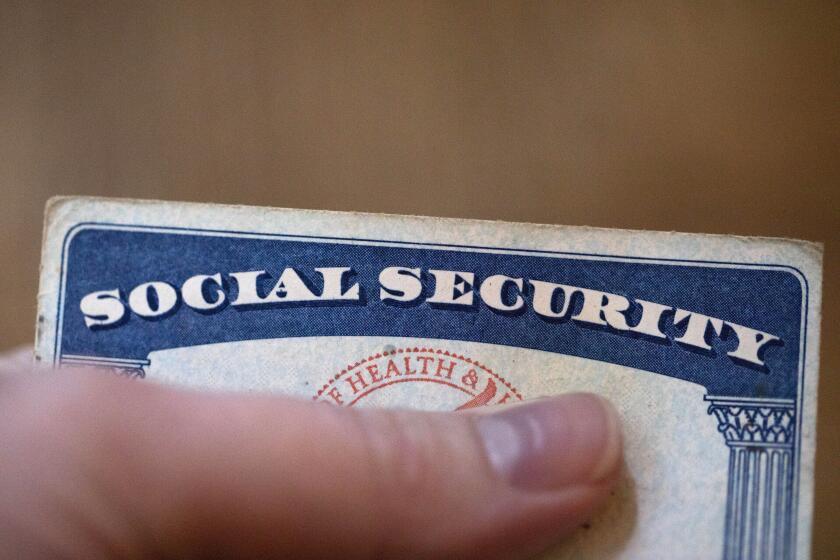Fed raises interest rates and predicts faster pace of future increases

The Federal Reserve, seeing a quickening of economic growth and suggesting a bit more concern about inflation, raised interest rates for the second time this year — and signaled two more rate hikes for the second half of this year.
The central bank’s announcement Wednesday to nudge up its benchmark rate by another quarter of a point, to a range of 1.75% to 2%, was widely expected. It marked the seventh rate increase since the Great Recession, and reflected policymakers’ confidence that the solidly growing economy could handle additional rate increases.
“The economy is doing very well,” Fed Chairman Jerome Powell said at a news conference, shortly after issuing a Fed statement that was equally upbeat. “Most people who want to find jobs are finding them, and unemployment and inflation are low.”
“We think that gradually returning interest rates to a more normal level as the economy strengthens is the best way the Fed can help sustain an environment in which American households and businesses can thrive,” he said.
Stock market investors, however, did not like the Fed’s slightly more aggressive stance on removing monetary stimulus, as several years of very low interest rates and inflation had supported the bull market. Both are on their way up.
The Dow and broader Standard & Poor’s 500 index dropped after the Fed news and closed out the day nearly half a percent lower.
The central bank now expects to raise rates twice more this year, instead of the one time that it forecast in March. And three rate hikes have been penciled in for next year when monetary policy is expected to be no longer stimulative.
Rising Fed rates will put a further squeeze on some households as interest rates for credit cards, car loans and home equity lines of credit move higher with the central bank’s policy actions.
“If you want to be on the right side of rising interest rates, you need to be a saver, not a borrower,” said Greg McBride, chief financial analyst at Bankrate.com. “This is a time you want to be funneling money into reserves and building up for an eventual downturn.”
Analysts said most households, though, would be able to absorb the higher borrowing costs, benefiting in part from the tightening labor market that should lead to higher wages. Powell said, “You will see wages go up, you’ll see people at the sort of the margins of the labor force having an opportunity to get back in work. They benefit from that, society benefits from that.” He added that “you do not see excess credit growth” for households, while bank leverage is “significantly lower.”
Thus far, workers’ earnings have yet to break out from their middling pace. The U.S. Bureau of Labor Statistics this week released data showing that average hourly earnings for production and nonsupervisory employees, when accounting for inflation, increased 0.1% from April to May on a seasonally adjusted basis. But hourly earnings fell 0.1% from May 2017 to May 2018, even as weekly earnings rose 0.5%, reflecting a longer workweek.
Carl Tannenbaum, chief economist at Northern Trust in Chicago, said it should be noted that “interest rates remain awfully, awfully low.” For businesses, he said, “they’re not at a level that should be stifling credit conditions, which broadly are quite easy.”
Tannenbaum also said that he was reassured to see that Powell, a noneconomist who took the helm at the Fed in February, appeared much more comfortable than at his first hourlong news conference in March, providing clear, plain-spoken answers. The quarterly meeting with journalists to explain Fed policy has been a staple since 2011. Powell said Wednesday that he would hold a news conference after every policy meeting, or eight times a year, starting next January.
In its statement, the Fed said the economy “has been rising at a solid rate,” an upgrade from its assessment in May when policymakers last met and described the economy as advancing moderately. Fed policymakers saw more robustness in consumer spending of late and said business investment “has continued to grow strongly.” Powell indicated that the GOP tax cuts that took effect this year would boost growth.
“It makes sense that if you lower corporate tax rates and — and allow faster expensing of investment, you will encourage greater investment, that should drive productivity, that should increase potential output,” he said. Asked whether workers would share in the corporate tax cuts, he replied: “We don’t have the tools to — to control that.”
The central bank’s updated projections showed that policymakers’ median expectation for economic growth for this year rose a notch to 2.8% from 2.7% in its previous forecast in March.
The Fed’s growth forecast for 2019 and 2020 was unchanged, at 2.4% and 2%, respectively. These figures are still considerably below what Trump administration officials at various times have promised or projected.
In expecting four rate hikes this year, and staying with three increases for next year, Fed policymakers appeared to be a little more concerned about rising prices and guarding against the risks of an inflationary surge.
The latest government data indicate inflation ticking up recently very close to the Fed’s 2% target, which policymakers acknowledged in their statement Wednesday. The Fed’s new projection sees inflation moving up to 2.1% this year, compared with 1.9% in its March forecast.
As employers increasingly struggle to find workers — the jobless rate in May matched an 18-year low of 3.8% — wage gains could accelerate. The Fed’s latest projection now sees the unemployment rate dropping to a half-century low of 3.6% by the end of this year and sliding to 3.5% in the next two years.
Another factor that could add inflationary pressure is the uncertainty over trade. The Trump administration’s move to impose tariffs on steel and aluminum imports already has increased prices paid by construction firms and other metal users, and some of those costs are likely to spill down to consumers.
Ryan Sweet, an economist at Moody’s Analytics, noted, for example, that washing machine prices have soared since the administration slapped tariffs on imported washers. “The price increases businesses feel will start to intensify in the coming months,” Sweet said, although he doesn’t expect inflation to get out of hand.
There are rising concerns about trade more generally and the potential risks to the economic outlook. The Fed’s so-called beige book, an anecdotal account of business and economic conditions, reported that tariffs and the threat of a trade war with China have begun to affect capital projects and disrupt supply chains.
The central bank did not make a special note of trade in its statement, and Powell deftly deflected questions about rising trade friction.
“I’m really committed to staying in our lane on things. We have very important jobs assigned to us by Congress, and that’s maximum employment, stable prices, financial stability. Trade is explicitly assigned to the executive branch by Congress and not to us,” he said.
He said that “there is concern that trade changes could be disruptive,” but noted that “we don’t see it in the numbers yet.”
Diane Swonk, chief economist at the consulting firm Grant Thornton in Chicago, said she was a little surprised that Powell did not express a bit more concern about the potential economic effects of severe trade actions.
“There is a real risk of a full-blown trade war, but until it happens I can understand his reluctance to put too much weight on it because of how rapidly policy seems to change in this administration,” she said. “This is where Chairman Powell as a non-economist can be a little more vague, and it’s probably wise to do so, because if you get too much in the middle of it you’re going to be a target.“
Follow me at @dleelatimes
UPDATES:
5:15 p.m.: This article was updated with more details about the Fed’s decision, economic analysis and comments from several analysts.
11:40 a.m.: This article was updated with a comment from Fed Chairman Jerome Powell.
This article was originally published at 11 a.m.
More to Read
Inside the business of entertainment
The Wide Shot brings you news, analysis and insights on everything from streaming wars to production — and what it all means for the future.
You may occasionally receive promotional content from the Los Angeles Times.











